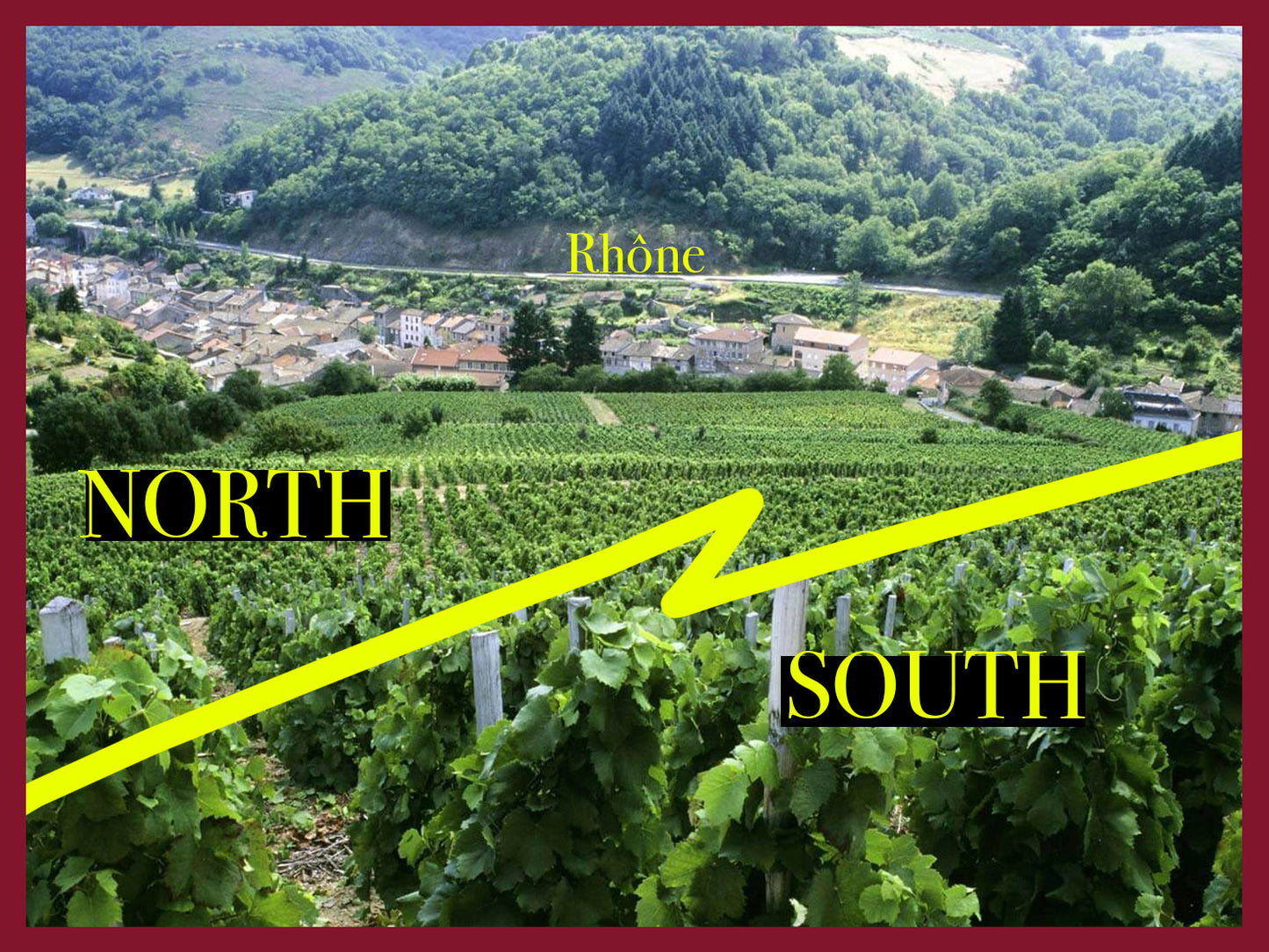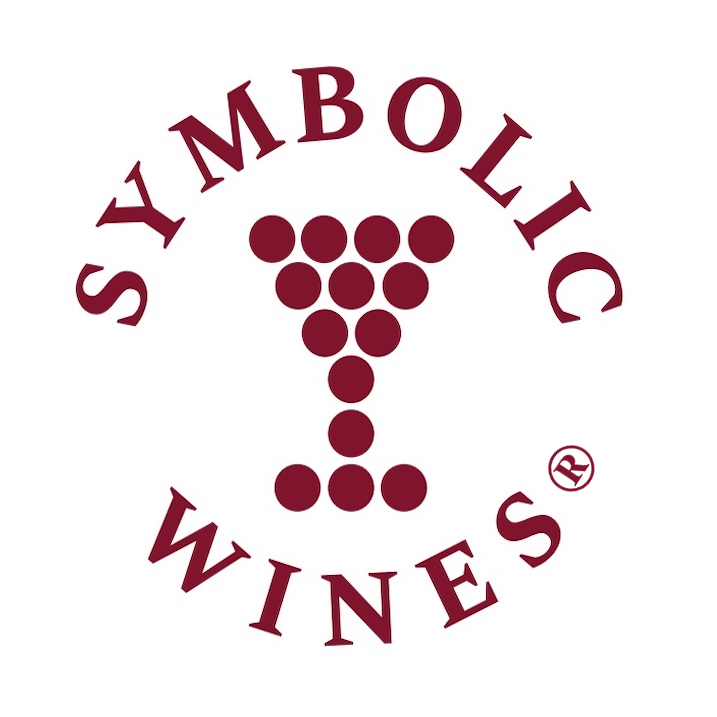
Text by: SW team
The Rhône Valley, located in southeastern France, stretches along the Rhône River between Lyon and the Mediterranean Sea and is one of the country’s most historic and diverse wine regions. It is traditionally divided into two parts: the Northern Rhône, where steep terraced vineyards produce powerful reds dominated by Syrah and elegant whites made from Viognier, Marsanne, and Roussanne; and the Southern Rhône, known for its sun-drenched blends, particularly Grenache-based reds, alongside Mourvèdre, Syrah, and other varietals.

The region is renowned for producing wines that range from approachable, fruit-forward Côtes du Rhône to the prestigious and complex Châteauneuf-du-Pape, making it a cornerstone of French winemaking with a remarkable balance of tradition and variety. The northern and southern Rhône are like twin sisters—similar yet completely different. It would take long to understand them both, but we've created a clear guide so you'll never confuse them again. Head north and you're in the world of single-varietal wines; head south and you'll find yourself in a warm palette of blends and dense textures.
Northern Rhône

5% of the valley's total production. Incomparable Syrahs and rich whites.
Terroir: Steep terraces along the valley. The slopes are rocky, sometimes dauntingly steep, but they shape the style: precise, structured, and mineral. And chilly winds! They preserve acidity, and aromas.
Varieties: Among reds, only Syrah. It can be bold and spicy with dense tannins, and in the best areas, floral, elegant, with enormous aging potential. In Côte-Rôtie, for example, a touch of Viognier is added to deepen the "inky" character. Among whites, Viognier is especially good in Condrieu. Jancis Robinson calls it "a hedonist's wine," and sommelier Nancy Hawks Miller describes it this way: "One big, sensual kiss of ripe peaches and apricots, orange blossom, tropical fruit". Marsanne and Roussanne are also used: often paired, they produce fruity, buttery wines that are energetic in their youth and more complex with maturity.
Where to start: Crozes-Hermitage or Saint-Joseph—these wines are softer and more affordable, but with the same Northern Rhône accent. Syrah will reveal itself with sculpted, fine tannins, notes of berries and cassis liqueur, a touch of spice, lapsang souchong, and smoke. Whites made from Marsanne and Roussanne are also excellent for introduction. With their honeyed, floral aromas, balanced density, and acidity, they contrast strongly with more opulent Viognier-based wines.
How to learn them: Through Syrah from Hermitage, Côte-Rôtie, and Cornas—they offer three distinct character traits. Simon Field MW compares them: "If Côte-Rôtie is aromatic sophistication, and Hermitage is an iron fist in a velvet glove, then Cornas is more of a rougher cousin. An iron fist in an iron glove, if you will." And here's what writer Kermit Lynch says about Côte-Rôtie: "Delicate and perfumed, it speaks softly, but it has something to say: lilies, bacon, spices... Only Côte-Rôtie can do that." White Marsanne and Roussanne offer another facet of character. These two varieties are particularly good in Hermitage, Crozes-Hermitage, and Saint-Joseph. With age, they develop tones of nuts, quince, musk, and spice, the texture of the wine deepens, and the flavors become more layered. A good bottle easily lasts 10 years or more.
Key virtues: The way Syrah shows itself in these regions: from deep austerity to floral elegance. "Only in Côte-Rôtie, Hermitage, and Cornas does Syrah reach such glorious heights," said Robert Parker. And then there are the rich white wines of the Northern Rhône.
Southern Rhône

95% of the entire valley. Generous, sunny, and talkative.
Terroir: Sun-warmed plains and rocky soils with occasional cobblestones. It's great to have plenty of wild, aromatic herbs around: rosemary, sage, juniper, lavender, mint. "The heady aroma of garrigue permeates the air here, reminiscent of the herbal, peppery, and smoky notes in the wines," – Wine Enthusiast.
Varieties: It’s not easy to pick a few. The classic red is GSM: a blend of Grenache, Syrah, and Mourvedre. Grenache imparts juiciness and jamminess, Syrah structure and black fruit flavors, and Mourvedre – depth and chocolate nuances. Up to 18 (!) varieties are permitted in Châteauneuf-du-Pape, including whites, but the powerful style is always recognizable. Speaking of whites: most often, it's Grenache Blanc, Marsanne, Roussanne, Viognier, Clairette, Bourboulenc and Picpoul. Also used primarily in blends, they produce rich, aromatic wines that age well.
Where to start: Rosé. Tavel is an "anti-Provence": rich color and flavor, juicy strawberries, a slice of white chocolate, thyme, and a hint of chewing tobacco. Red from Gigondas: bright, smoky, and rich. Its powerful flavor makes it an excellent pairing with lamb.
How to learn them: A red Châteauneuf-du-Pape is the key wine of the south. Generous, rounded, with garrigue tone on the nose: lavender, rosemary and juniper. This wine, according to Jancis Robinson, is "fleshy, high in alcohol and dense in body—inviting yet slightly overwhelming in its intensity." Young Châteauneuf is bright, expressive and fruity. But the mature version is more refined and rich with notes of pine, cedar, red fruit and spices. According to Robert Parker, "The main charm of Châteauneuf-du-Pape—beyond its gastronomic appeal, generosity of flavor, and luxurious texture—is its combination of intellectual and hedonistic qualities, which is deeply addictive."
Key virtues: It can be versatile. From a light summer wine to "big, muscular, and viscous," as Parker describes a good Gigondas. Thanks to the balance of ripeness, tannins, and acidity, you'll barely notice the 15% alcohol.
Two uncommon AOCs of Rhône
There are two places in the valley, where uncommon and not expected magic happens. Those two are Côtes du Rhône and Dié AOC. Côtes du Rhône is a regional appellation with red, rosé, and white wines from across the valley, from its northern to southern reaches (although the bulk of production and historical reputation are associated with the Southern Rhône). It offers both light, friendly wines and more structured ones, in which the regional style is particularly evident. There are also sub-levels, such as Côtes du Rhône Villages, which identifies specific villages.
Dié AOC is a small region between the Northern and Southern Rhône, at the foot of the Alps, where unique sparkling wines are produced. First and foremost is Crémant de Dié, made using the traditional Champagne method, with richly fruity aromas and austere flavors. Also available is Clerette de Dié Tradition, a sweet sparkling wine in the style of Asti: Muscat-based and the traditional Ansestral method.


